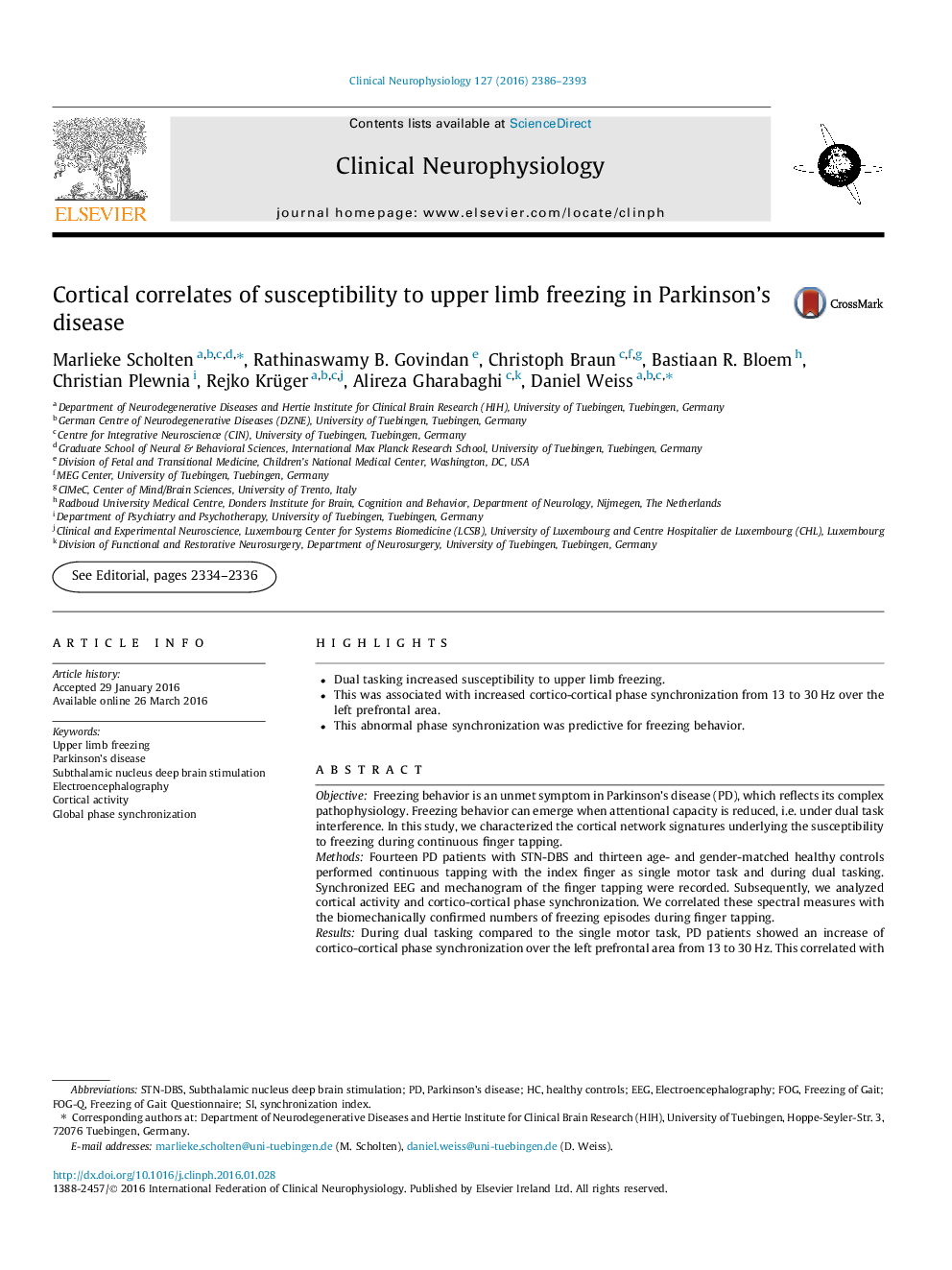| کد مقاله | کد نشریه | سال انتشار | مقاله انگلیسی | نسخه تمام متن |
|---|---|---|---|---|
| 3042750 | 1184958 | 2016 | 8 صفحه PDF | دانلود رایگان |
• Dual tasking increased susceptibility to upper limb freezing.
• This was associated with increased cortico-cortical phase synchronization from 13 to 30 Hz over the left prefrontal area.
• This abnormal phase synchronization was predictive for freezing behavior.
ObjectiveFreezing behavior is an unmet symptom in Parkinson’s disease (PD), which reflects its complex pathophysiology. Freezing behavior can emerge when attentional capacity is reduced, i.e. under dual task interference. In this study, we characterized the cortical network signatures underlying the susceptibility to freezing during continuous finger tapping.MethodsFourteen PD patients with STN-DBS and thirteen age- and gender-matched healthy controls performed continuous tapping with the index finger as single motor task and during dual tasking. Synchronized EEG and mechanogram of the finger tapping were recorded. Subsequently, we analyzed cortical activity and cortico-cortical phase synchronization. We correlated these spectral measures with the biomechanically confirmed numbers of freezing episodes during finger tapping.ResultsDuring dual tasking compared to the single motor task, PD patients showed an increase of cortico-cortical phase synchronization over the left prefrontal area from 13 to 30 Hz. This correlated with increased occurrence of freezing episodes. Interestingly, PD patients lacked the increase of prefrontal cortico-cortical synchronization from 4 to 7 Hz during dual tasking as observed in healthy controls.ConclusionDual task interference led to an increase of left prefrontal beta band synchronization (13–30 Hz) in PD and this increment predicted the number of freezing episodes. This increment may underscore the relevance of prefrontal executive dysfunction in freezing susceptibility.SignificanceThese findings enhance our understanding of the pathological network mechanisms behind increased susceptibility to freezing behavior.
Journal: Clinical Neurophysiology - Volume 127, Issue 6, June 2016, Pages 2386–2393
